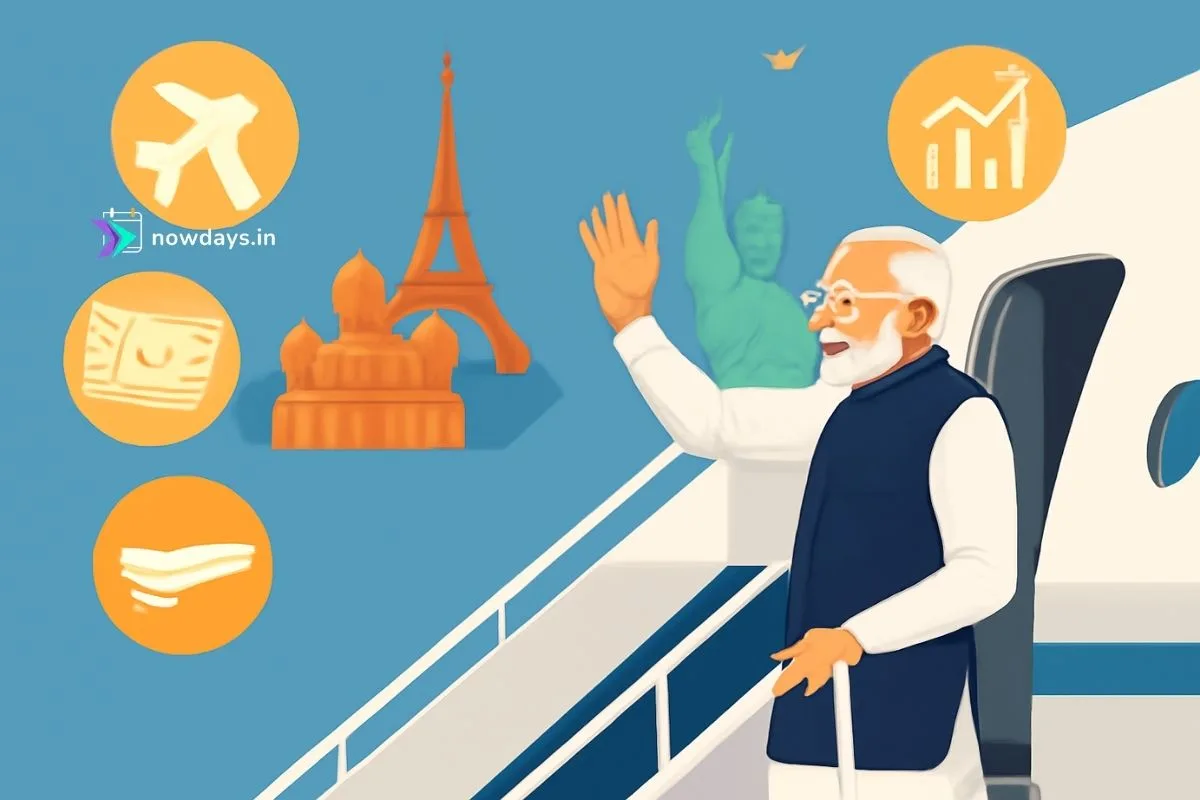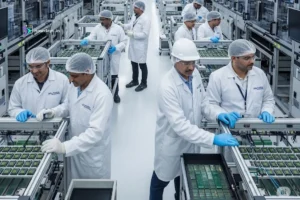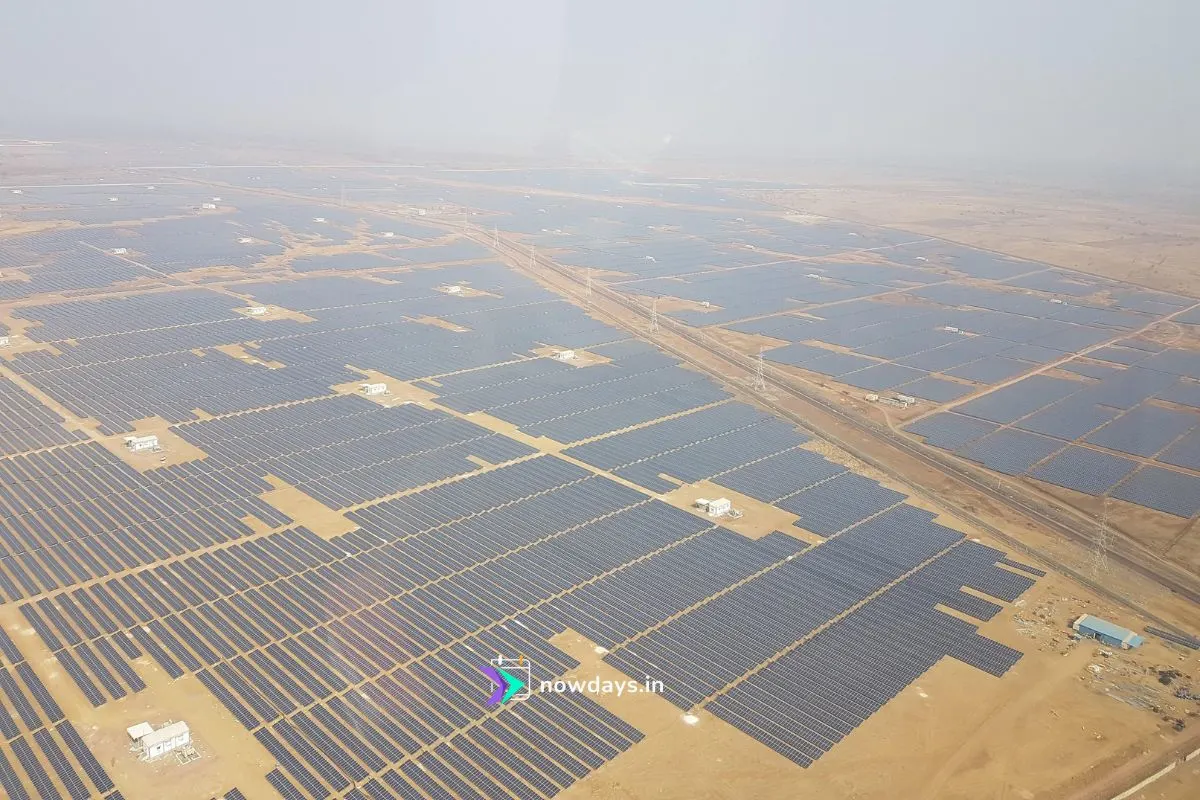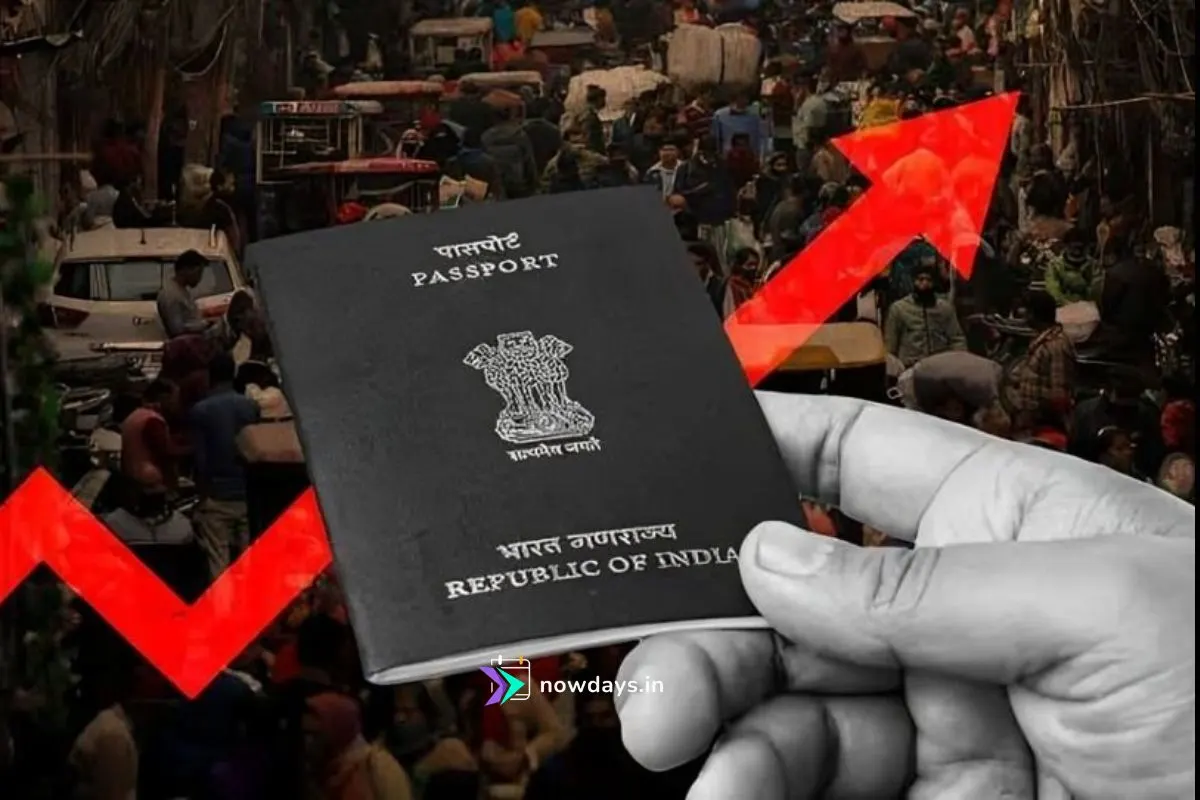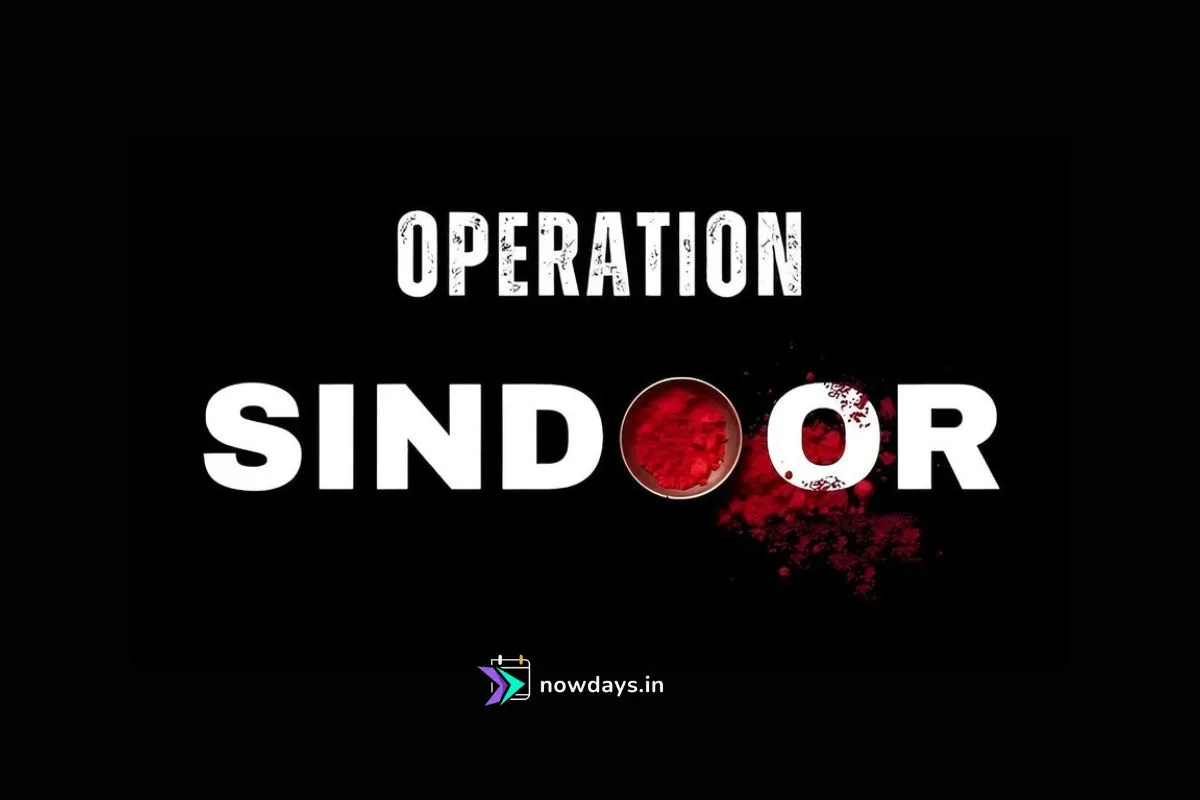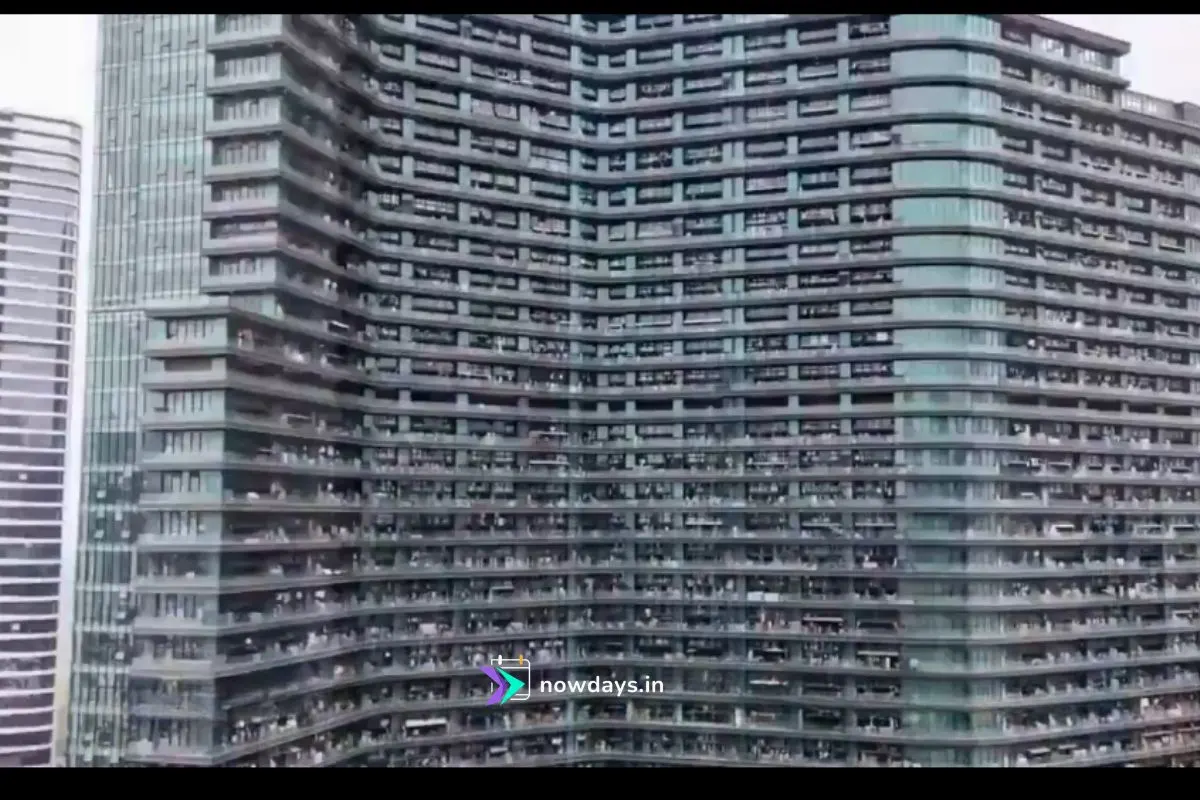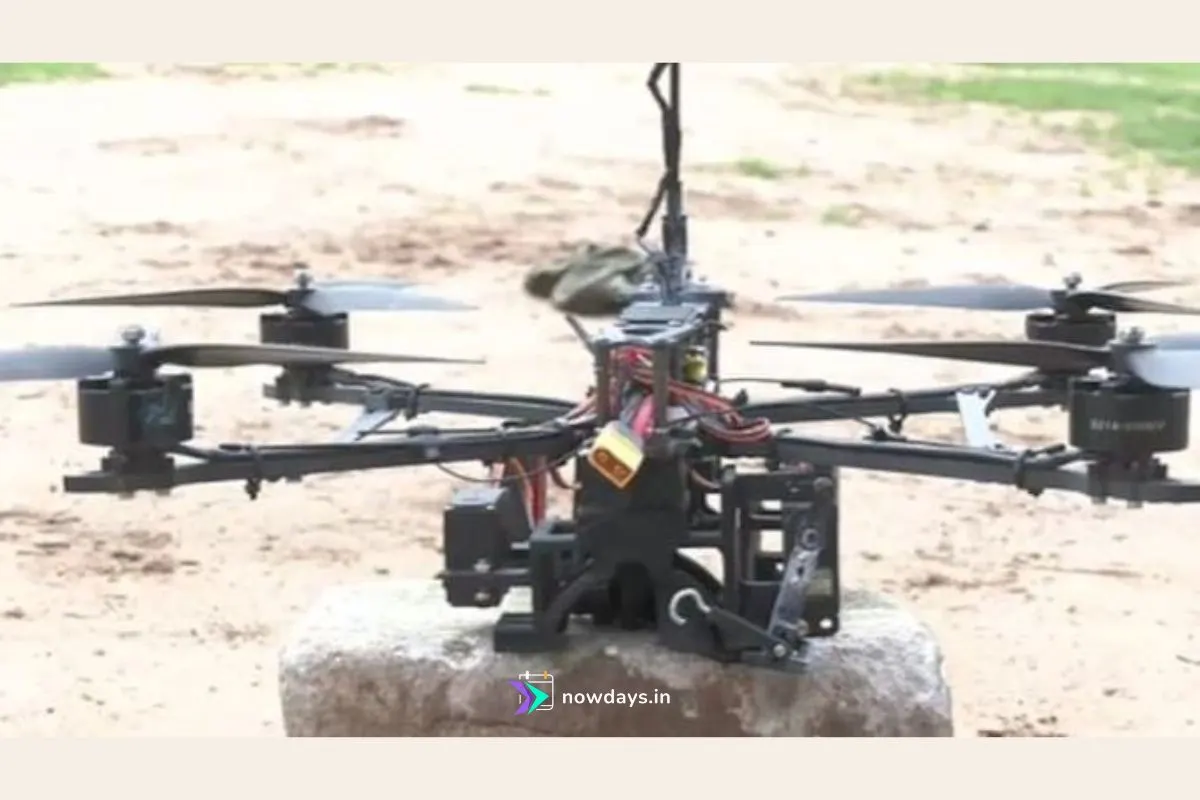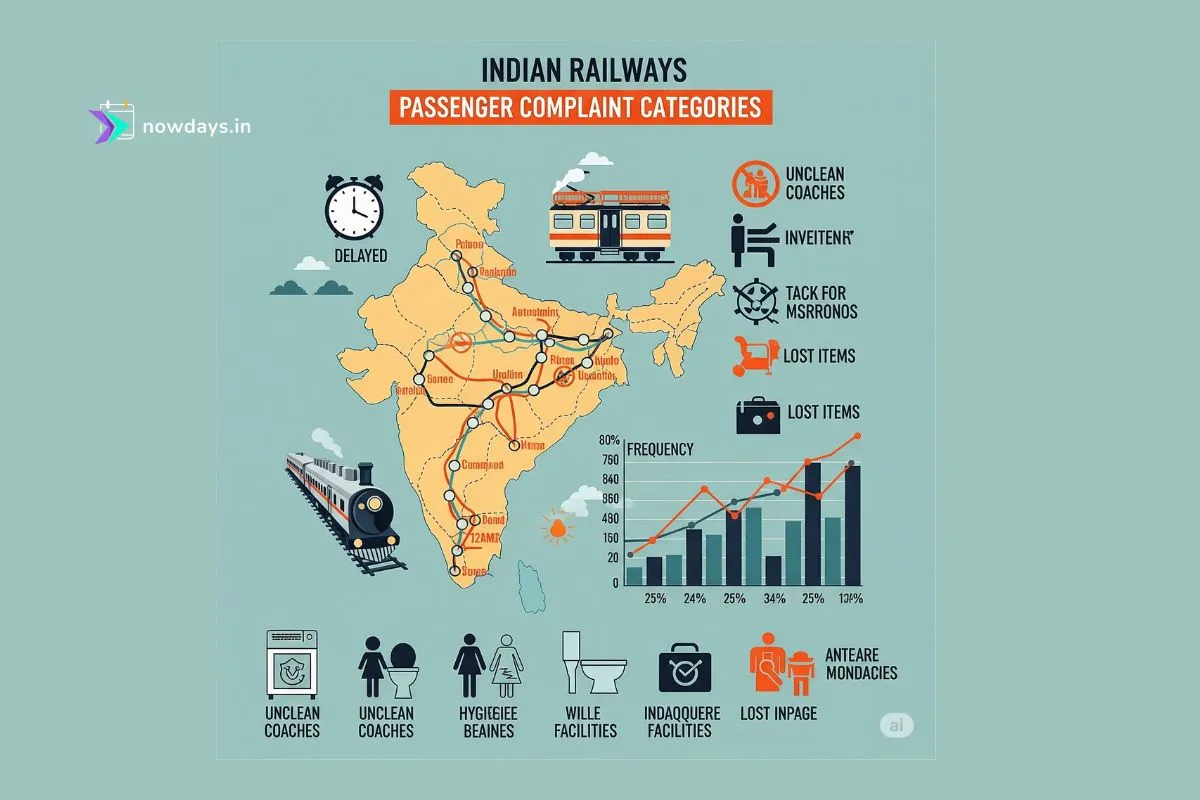Prime Minister Narendra Modi has pursued a highly proactive foreign policy since 2014, combining economic diplomacy with high-profile public outreach abroad. In his first term (2014–2019), Modi embarked on 92 overseas trips to 57 countries – nearly twice as many as his predecessor in the same span – marking India’s greater global engagement. We examine each term in turn.
First Term (2014–2019)
Key Visits and Goals: Modi launched his tenure with a flurry of state visits and summits. In his first 100 days he traveled to Bhutan, Nepal and Japan, signaling a focus on neighbors and traditional partners. He attended summits from Davos to BRICS and visited major powers (USA, China, Japan, Russia, Europe) as well as emerging regions (Africa, Southeast Asia, Gulf). These trips aimed to attract investment into India and secure strategic partnerships.
Economic and Energy Outcomes: The visits yielded tangible economic gains. Foreign direct investment surged: by the end of 2019, India had drawn about $193 billion FDI during Modi’s first term – roughly 50% more than in the previous five years. He used foreign tours to bolster “Make in India” and won investment commitments from several countries.
Energy security improved through new deals: India began importing crude oil and LNG from the United States for the first time, and secured major investments in refineries. For example, Saudi Aramco agreed to invest in India’s largest refinery, and the UAE filled India’s strategic petroleum reserves, easing fiscal strain. Modi also maintained ties across the Gulf and with Iran to diversify energy sources.
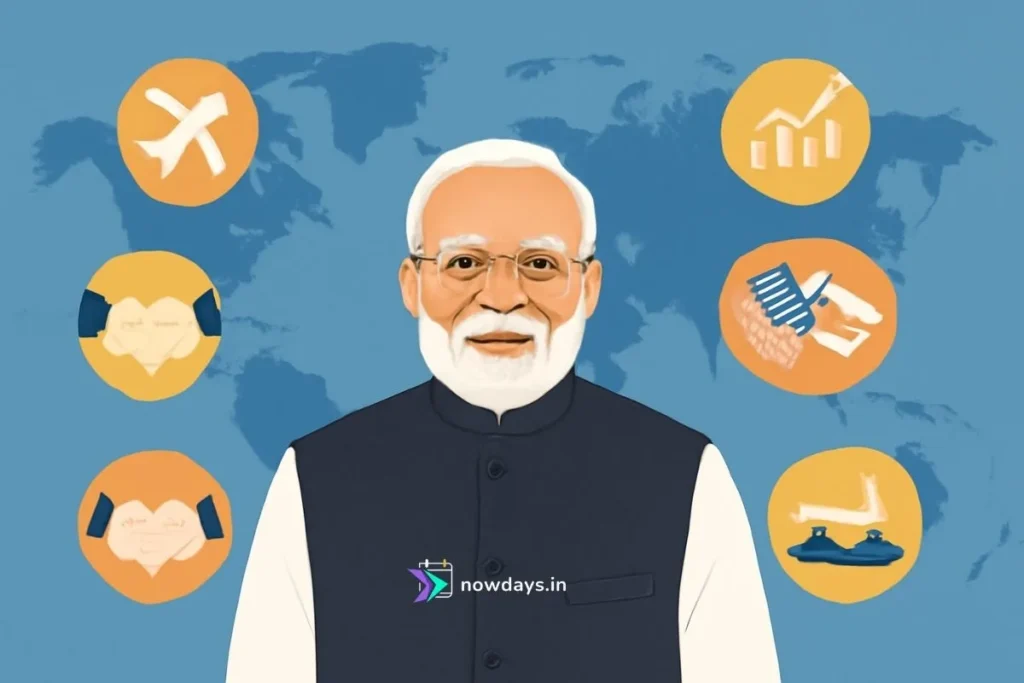
Defense and Technology Deals: Modi’s state visits also locked in defence partnerships. He signed a ₹58,000 crore (~$8.7 billion) deal in 2016 to buy 36 Rafale fighter jets from France. He launched a high-speed rail project with Japan (the Mumbai–Ahmedabad bullet train) and deepened military ties with the US (joint exercises and co-development). His 2017 historic visit to Israel – the first ever by an Indian PM – opened cooperation on advanced defense and water technology. In sum, big-ticket projects (a new refinery, defense jets, high-speed rail) were inked, laying groundwork for long-term capacity, even if implementation took longer.
Strategic Shifts: Modi’s travels signaled strategic realignments. He revived the Quadrilateral Security Dialogue with the US, Japan and Australia (the “Quad”) to shape the Indo-Pacific balance, and openly courted Western partners. His visits to Europe (e.g. Paris, Berlin) and meetings at climate and security forums (Davos, Shangri-La) projected India as a rising power. At the same time, he managed the delicate balance with Russia – securing long-planned arms deals and pipelines – and engaged China, notably hosting Xi Jinping for BRICS summits and even holding an informal summit in Wuhan to ease tension.
Modi also accelerated outreach to Africa: two India–Africa Forum Summits (2015, 2017) and numerous visits to African capitals aimed to deepen trade and development ties, though critics say results on the ground were mixed. Overall, his first-term diplomacy expanded India’s footprint in multilateral groupings and regional partnerships.
Diaspora and Soft Power: A hallmark of Modi’s strategy was unprecedented engagement with the Indian diaspora abroad. He treated overseas Indians as political constituencies and brand ambassadors. For example, in 2014 he electrified 20,000 Indian-Americans at New York’s Madison Square Garden. Two years later he met tens of thousands in Silicon Valley, and in 2019 drew 50,000 to the “Howdy Modi” rally in Houston. These mass events – carefully choreographed public displays – often overshadowed the more formal aspects of state visits.
Analysts note this was a significant departure from past practice, “marking a notable shift in how India engages with its diaspora abroad”. Modi also used foreign platforms to burnish India’s image: he addressed the World Economic Forum at Davos and security conferences in Singapore, portraying India as an investment hub and global player. These soft-power efforts aimed to boost confidence among investors and overseas Indians, and to sell India’s narrative globally.
Major Agreements: Modi’s visits spawned dozens of Memoranda of Understanding. Key pacts included the Rafale jet deal with France, the Iran nuclear fuel supply agreement (carried forward from UPA but concluded in 2017 under Modi), and multiple MOUs on trade, technology and connectivity. For example, he launched the International Solar Alliance (with France) to lead on clean energy, and signed long-term LNG contracts with Middle Eastern partners.
While not all agreements immediately translated into projects, many built long-term economic linkages. Notably, by 2019 the groundwork laid during these tours had boosted India’s investment inflows and defense preparedness, even as critics cautioned that some promises remained to be fulfilled.
Second Term (2019–2024)
Deepening Gulf and Indo-Pacific Partnerships: Modi’s second term saw an even heavier focus on West Asia and Indo-Pacific ties. He made an unprecedented seven trips to the UAE (most recently in early 2024), reflecting a close personal rapport with UAE leaders. In fact, Modi and UAE President Sheikh Mohamed bin Zayed (MbZ) call each other “brother,” signaling unusually warm ties. This is reflected in trade and investment: after a 2022 Comprehensive Economic Partnership Agreement (CEPA) came into force, bilateral trade surged and reached about $85 billion in 2022–23. Modi and MbZ have set a goal of hitting $100 billion well ahead of 2030.
In Saudi Arabia, Modi upgraded the relationship via a new India–Saudi Strategic Partnership Council. During a 2019 state visit, Crown Prince Mohammed bin Salman pledged over $100 billion of Saudi investment in Indian energy, petrochemicals, infrastructure and more. This included a joint $44 billion refinery project on India’s west coast. India also secured long-term energy ties: in 2024 it agreed to buy discounted LNG (worth about $78 billion) from Qatar and signed new long-term gas contracts with Abu Dhabi and Doha. Across the Gulf, Modi emphasized India’s strategic convergence: by 2023 India had strategic partnerships with UAE (2015), Saudi Arabia (2019) and Egypt (2023), and India hosted first-ever visits by Gulf leaders (e.g. Oman’s Sultan Haitham in 2023).
Meanwhile, Modi bolstered the Quad grouping with the U.S., Japan and Australia. He co-hosted the first in-person Quad summit in 2021, advancing cooperation on pandemic response (vaccine manufacturing) and technology. His relationship with the United States grew markedly: in 2023 Modi secured invitations to speak at Congress and had multiple meetings with President Biden. India was formally designated a Major Defense Partner, and defence/tech cooperation accelerated (e.g. agreements on logistics support, space cooperation, and future fighter jets).
One analysis of Modi’s 2025 Washington visit noted that it “signaled that U.S.-Indian relations will continue along the positive trajectory seen in recent years, particularly in defense and technology cooperation”. Trade talks also progressed, with India negotiating a Free Trade Agreement with the U.S.-backed UK and deepening economic ties with Europe (Germany, France) via technology and climate pacts.
Managing Great Power Dynamics: During Modi 2.0 India deftly balanced relations with rival powers. With China, the period was tense — there was a major border clash in 2020 — but Modi maintained dialogue (including the 2019 Wuhan summit) and leveraged regional groupings. Concurrently, as Russia invaded Ukraine in 2022, India navigated Western pressure carefully: it continued buying Russian oil at discounted prices to meet energy needs, even while leading the G20 summit in 2023.
Modi’s government used this period to demonstrate India’s diplomatic skill, and abroad “India’s remarkably successful G-20 presidency in 2023, coupled with its chairmanship of the Shanghai Cooperation Organization (SCO), virtually sealed India’s status on the world stage”. In effect, India under Modi became a bridge between East and West, hosting world leaders and pushing for international issues (like reform of the UN and climate action).
Economic Deals and MOUs: Modi’s second-term travels also produced major economic agreements. Notably, at COP28 in late 2023 he co-launched the India-Middle East-Europe Economic Corridor (IMEEC) initiative, aimed at connecting India with the Gulf and Europe via infrastructure (this was formalized with an inter-governmental framework in early 2024). India also signed a Bilateral Investment Treaty with the UAE and formalized multiple fintech and energy pacts (e.g. linking India’s UPI digital payment network with UAE’s systems).
Defense cooperation grew through pacts like BECA (Basic Exchange and Cooperation Agreement) and COMCASA with the U.S., enhancing military logistics and geospatial sharing. In 2024 the UK-India free trade agreement was finalized (after Modi’s visits to Britain), promising deeper market access and investment on both sides. Altogether, Modi’s tours in this period helped lay the foundation for long-term economic gains: from new FDI pipelines and joint ventures in Gulf industries to expanded defence production and energy security deals.
Diaspora and Soft Power: Modi’s second term reaffirmed the diaspora outreach strategy. He continued to draw massive overseas audiences, hosting events such as “Namaste Trump” (2020, Houston) and “Howdy Modi” (2019, Houston) with tens of thousands attending. These events remained “a significant part of his diplomatic toolkit,” according to analysts, and “marked a notable shift in how India engages with its diaspora abroad”.
Modi also used culture and values as soft power: he chaired the G20 summit and proposed a “Global South” development agenda, held international Yoga Day celebrations, and emphasized India’s civilizational links in speeches abroad. Such outreach continued to burnish India’s image internationally and rallied support for Indian initiatives.
Comparing to Previous Governments
In both terms Modi’s style has been a departure from his predecessors. He travelled much more than earlier prime ministers – for example, he clocked 92 foreign trips by 2019, nearly double that of Manmohan Singh in an equivalent period. His diplomacy is personal and performative: large diaspora rallies and high-energy summits are hallmarks of Modi’s approach, whereas earlier leaders generally conducted more traditional, government-to-government diplomacy.
Analysts see this as a shift in style (charismatic outreach and personal branding) while the core objectives (seeking investment, building alliances) remain broadly in line with past policies. Unlike some previous administrations, Modi has put an almost equal emphasis on economic as well as security engagements, turning many visits into corporate roadshows. While previous PMs visited neighboring countries and strategic partners, Modi’s aggressive travel schedule and media-savvy events represent a new phase in Indian diplomacy.
Total expenditure during PM Modi's foreign visits so far in 2025.
— Sidhant Sibal (@sidhant) July 24, 2025
From Parliament Papers: pic.twitter.com/Iv4EgIVnjV
Sources: Government communiqués and reporting on Modi’s visits show that his foreign tours have generated record investment and strategic agreements. Analyses from news outlets and think-tanks document the tangible outcomes in trade, defense, energy and diaspora relations. The data above come from official joint statements and media reports, which detail the deals and MOUs signed on these trips.
